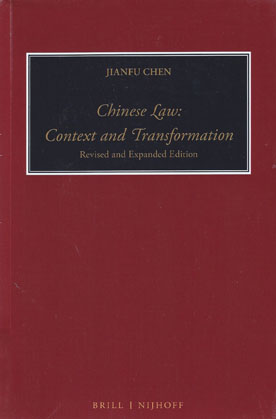
Like the previous edition in 2008, this book examines the historical and politico-economic context in which Chinese law has developed and transformed, focusing on the underlying factors and justifications for the changes.
It attempts to sketch the main trends in legal modernisation in China, offering an outline of the principal features of contemporary Chinese law and a clearer understanding of its nature from a developmental perspective.
It provides comprehensive coverage of topics: 'legal culture' and modern law reform, constitutional law, legal institutions, law-making, administrative law, criminal law, criminal procedure law, civil law, property, family law, contracts, torts, law on business entities, securities, bankruptcy, intellectual property, law on foreign investment and trade, Chinese investment overseas, dispute settlement and implementation of law.
Fully revised, updated and considerably expanded, this edition of Chinese Law: Context and Transformation is a valuable and important resource for researchers, policy-makers and teachers alike.